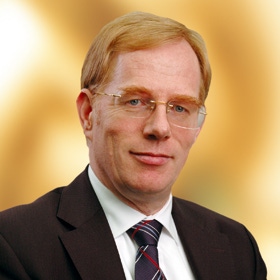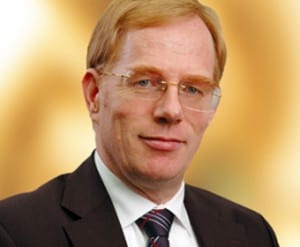David Wood, Symbian's executive vice president for research and a founding director of the group talks to telecoms.com sister publication MCI about its acquisition by Nokia and the move to make the platform open source.
August 29, 2008


davidwood1
David Wood, Executive Vice President, Symbian
David Wood, Symbian’s executive vice president for research and a founding director of the group talks to telecoms.com sister publication MCI about its acquisition by Nokia and the move to make the platform open source.
In 1998 David Wood, a senior software engineer at Psion, became a founding director of Symbian, the grouping of handset vendors that came together to establish a common operating system for mobile phones. Ten years on and-regulatory approval permitting-Symbian is about to be absorbed by Nokia, it’s principal shareholder, and its core products taken open source. Symbian has new competition as well, in the form of Google’s Android and the LiMo foundation’s plans for a Linux platform. Microsoft and Research In Motion are keeping the pressure on, too.
Ten years ago there were plenty of PDAs around, but not that many smartphones. The Nokia 9000 Communicator, which debuted at CeBIT in 1996, was probably all there was to give a hint at what might be to come. Today, while smartphones are by no means ubiquitous, they enjoy far higher penetration, says Wood.
“They’re not mass market yet,” he says, “But the biggest thing that’s happened over the last decade is the far wider distribution of this technology. Worldwide only ten per cent of phones are smartphones. But in some parts of the world the penetration is much higher. In Japan, something like 25 per cent of all phones sold last year were Symbian phones. And in Italy the number is significantly higher than ten per cent as well,” he adds.
These handsets have become more affordable, he says, partly through Moore’s Law, and partly through increased competition and efficiency in the handset manufacturing sector. The growing popularity of flat rate data tariffs in the operator community has also helped boost the penetration of a device segment that was once the exclusive realm of high-spending early adopters.
The arrival of players and products from other sectors-Google’s Android and the Apple iPhone-meanwhile, are spurring traditional handset vendors onto greater achievement. “The likes of Apple and Android have a very pleasant side effect from my point of view,” says Wood. “Because they raise awareness of smartphones generally. People can see one another using them and they decide they want something more than just voice.”
A boon to the sector they maybe, but Wood betrays no concerns that these new players could pose a threat to Symbian’s position. “We continue to set the standard. Each of the other operating systems brings some features that will encourage the industry as a whole-including us-to raise its game. But if I look across the broad range of features, I’m convinced that the Symbian OS has the richest and strongest set of solutions and the best flexibility and scalability,” he says.
But no phone from the Symbian stable has ever generated the kind of furore that engulfed the iPhone on its arrival. “The iPhone is a great device,” Wood concedes, “but it’s only got one form factor. Some people like that kind of device but others prefer a keyboard. That’s a common complaint about the iPhone; people want an easier means to enter lots of data. Incidentally, that’s the reason why a significant proportion of iPhone users carry a separate messaging device, such as a Blackberry, or another smartphone,” he says.
Wood argues that the variety of devices on offer from the Symbian side of the fence will stand it in good stead, and that the one-size-fits-all nature of the iPhone leaves the Apple product with something to prove.
Microsoft is the other principle contender in the mobile OS arena and Wood argues that market share figures tell the story here. “Microsoft have pretty good devices on successive releases of Windows Mobile but they don’t have anything like as large a market share as Symbian,” he says, preferring to focus on collaboration rather than competition.
Microsoft applications and services are running on top of the Symbian operating system, he says, proving that there is room for cross platform success. “We have Blackberry software from RIM running very well on Symbian devices too, even though RIM is a competitor. It’s the same with Google. They’re doing Android which is a competitor to Symbian but they’re actually producing lots of applications that run very well on Symbian phones.”
And he’s no more fazed by movements from the Linux camp of which Android is a member. “None of these have proven themselves in the market yet, with the exception of some of the phones that are available in Japan and some of the Motorola devices in China,” he says. “It’s one thing to be able to create a phone and it’s another to be able to meet the demands of the network operators and the approval authorities. People have the vision of a Linux operating system for phones. Then they came up against the reality that there’s an awful lot of devil in the detail. There’s ten per cent core Linux and 90 per cent devil in the detail. That has cost some companies huge amounts of money.”
And yet Symbian is taking a leaf from the Linux book and taking its operating system open source as part of Nokia’s acquisition. This will see the creation of the Symbian Foundation; essentially the previous shareholders and major licensees which will continue to use the platform in their handsets augmented by other firms which have hitherto been unable to become licensees because the costs have been prohibitive.
“There will be a licence,” Wood says, “because, to be clear, open source doesn’t mean no licence. There are still rules and important reasons why there are rules. People can’t modify the source code and still say it’s a Symbian device. There are also rules to do with patents. When people get the source code, they will also get royalty free licences for any patents that are in the code. So if people started suing the foundation because they say the Foundation invalidates their patents, then their patent licence granted by the Foundation will be withdrawn. So it’s all about encouraging community spirit, with people pooling their innovation rather than trying to score points of each other. Or indeed lots of money.”
Crucially, he says, the licence bestowed on Foundation members will require them to make their modifications available to the whole community, which Wood says will keep the Foundation platform unified and prevent fragmentation.
On control being ceded to Nokia, Wood argues that greater efficiencies will be born out of the closer alignment of Symbian’s technical team with Nokia’s S60 team, responsible for the UI and application layers. “I would expect future versions of Symbian OS and S60 to come out even faster than we’ve seen in recent history,” he says.
“The first result we expect from this open source move is much greater innovation. We’ve been very innovative in the last ten years, as the devices and solutions testify. But I think that we can now go even faster.”
He concedes that plans for the current Symbian Partner Network have yet to be finalised. “It’s too early to say what will become of it when the Foundation goes live. I imagine there will continue to be some value to be had by companies retaining additional membership to the partnership but frankly it still needs to be worked out. We’ve got the big vision as to how this will all work, in terms of the Symbian Foundation but we have some parts of that worked out in a whole lot more detail than others. In terms of the Symbian partner network, all I can say is that it’s going to make sense for companies to work very closely with Symbian for the foreseeable future,” he says.
In the immediate part of that future, Wood says, devices based on the Symbian 9.4 release should hit the market later this year. “We’re also close to releasing 9.5, as well,” he says. This latest iteration could be seen to contain Symbian’s rebuff to Apple’s famously successful user interface. “9.5 has the first versions of Screenplay, which is our new graphics architecture, and Freeway, which is our new IP networking architecture. And these will deliver what the end user will see as slicker, richer experiences. So there will be richer animation and 3D graphics, for example, and the equivalent of home broadband in your pocket,” he says.
The evolution of Symbian to an open source platform is clearly a response to increased competition from newcomers. With operators calling for consolidation within the handset OS space, drawing a wider development community to its breast, Symbian hopes, will keep it at the forefront of the sector.
Read more about:
DiscussionAbout the Author(s)
You May Also Like








.png?width=300&auto=webp&quality=80&disable=upscale)


_1.jpg?width=300&auto=webp&quality=80&disable=upscale)


.png?width=800&auto=webp&quality=80&disable=upscale)